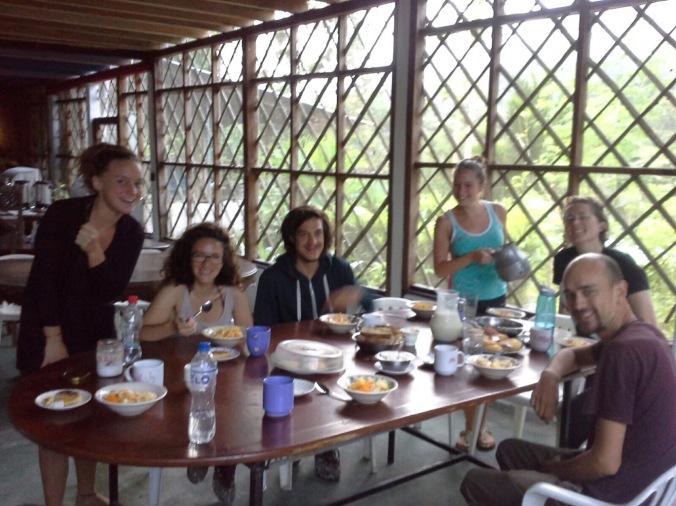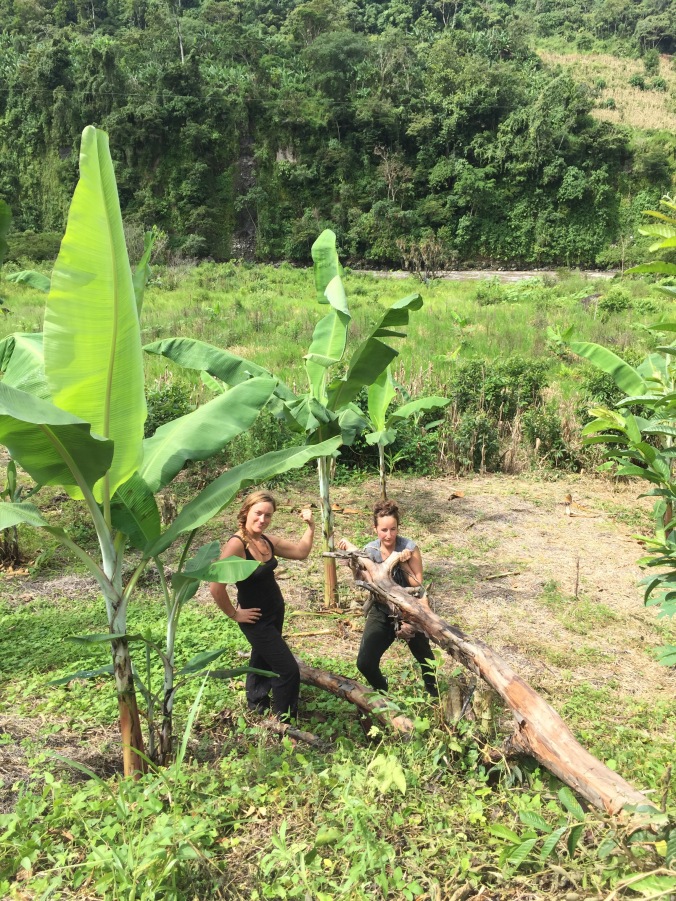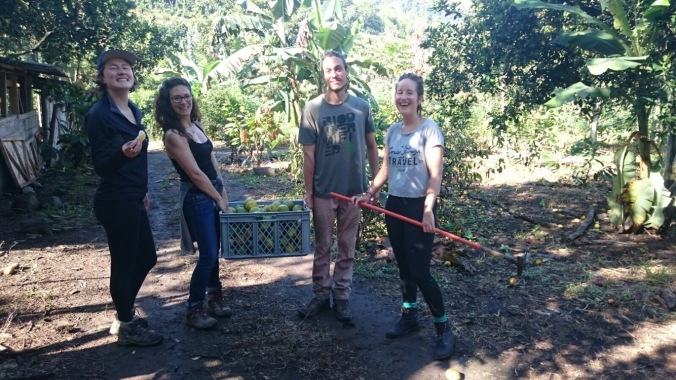I never thought I’d be able to go to the Galápagos Islands because I’d heard that they are prohibitively expensive but with workaway, the amazing volunteering network thing, it suddenly became perfectly affordable. I have been volunteering for two weeks at a new eco campsite/farm on Santa Cruz Island. The animals are just as mental as I imagined. All around the farm were wild giant tortoises wandering around and eating, utterly indifferent to our comings and goings. I would lie in the hammock and read and one would be chewing away merrily one metre away from me. The birds were equally friendly. Often finches and warblers would fly right up to your face and hover in front of you with their head tipped inquisitively to the side.
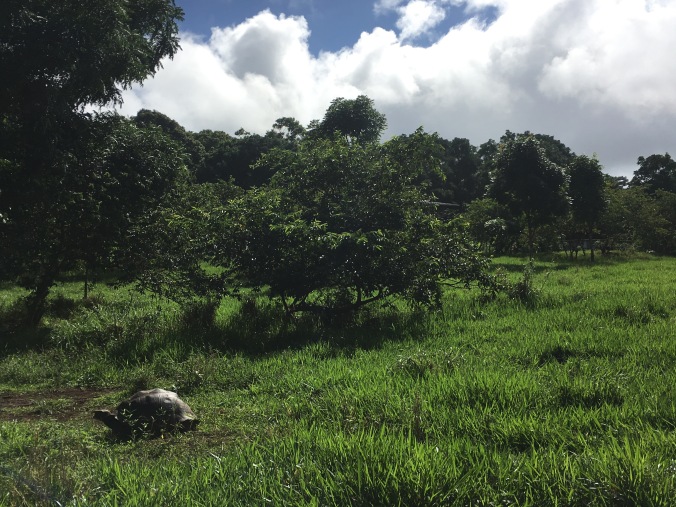

For the first week it was only me and Camila there, the 25 year old daughter of the owner of the camp, and we cleaned everything up ready for her mum and the first two guests’ arrivals. I washed a lot of windows. In the afternoons I’d cycle all around the island, go to the beach, read (I was reading Darwin’s The Voyage of the Beagle in honour of my location, and had to get through a lot of Darwin waxing lyrical about Patagonian geological formations before getting to his observations on Galapagos finches but it was worth it to see how wonderfully passionate and observant he was about every creature, every stone, every plant), make bread, and enjoy life.

The first weekend I took a trip to another island, Isabela, for some exploration. Camila had strongly recommended a snorkeling tour which I consequently booked, and was sent into a fit of bitterness at the haemorrhage of money that was occurring. The flights, the $120 tax to enter the Galapagos, $60 return ferry to Isabela, $10 foreigner tax, and then they were charging $120 for half a day of snorkelling. It was completely outrageous. I haggled it down to $100 but was still at a loss to how that could ever be worth it. When you’re spending a lot of money you want the amount of fun you’re having to increase proportionally, but I had left a place where I was staying for free and having the time of my life so was struggling coming to terms with feeling just normally happy and spending so much. I consoled myself by recognising that I would give every penny in my bank account for the lives of my family and/or my physical health, and actually I have all those things for free, so the snorkelling trip is just an added bonus.
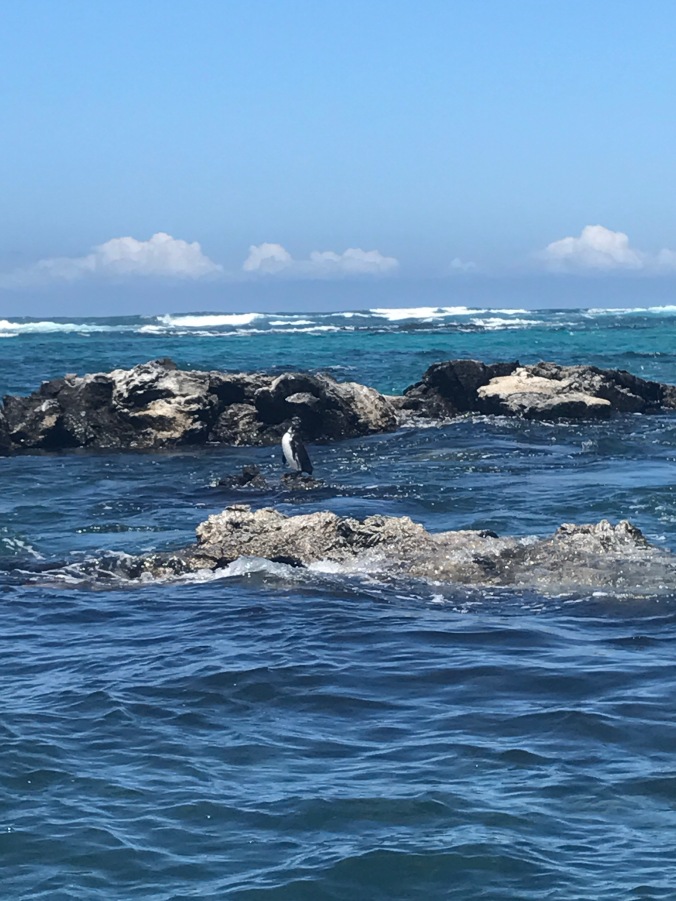
And as hard as it is to believe that a $100 snorkelling trip could be worth it, it really was. We all jumped in and were aimlessly floating about and then right in our grills appeared three giant turtles out of nowhere and I felt that that was what I’d came for. It was magical. Their shells were patterned so beautifully, each one totally distinct. Many, many fish and then a sea horse floating in the mangroves! A sea horse! Madness.


A little family of sting rays swam by and then we investigated a cave where we saw 14 sharks sleeping with their teeth grinning out at us. One went swimming around which was a bit alarming but they’re harmless apparently.


Later we got out of the boat and wandered over some lava tunnels, watching a blue footed booby doing its funny mating dance, stomping its big feet up and down, and another one sitting on its egg. Their nests are just right on the ground, no materials at all, but somehow they’ve retained the instinct that little sticks are a good thing so males will bring the female little sticks as a present, which then sit there uselessly.
At the next snorkelling stop we saw a penguin standing sentinel on a rock and swam with the jolliest sea lion. What a playful and fun creature – we tumbled around and around in the water together. It had so much joie de vivre, to even think about harming it was heartbreaking. That was one of the amazing things about the Galapagos that I’ve rarely experienced elsewhere – such close interaction with totally wild animals. It really drives it home that animals are living, complex, sentient beings, just like humans and so worthy of protection. Humans are not masters of the universe, we are one little part of a ginormous, connected web and need to get off our invented, destructive high horse.

The second week the owner and builder of the camp Monica, two friends of hers as clients, and four new volunteers came. I was relieved from cleaning duty and Camila and I started working with clay instead. We made shelves for the bathroom and many little hooks. I made a bird hook, a snake hook, a chilli pepper hook and a few other patterned ones. It was so incredibly pleasant to work creatively with my hands I started getting carried away and imagining a life for myself as a professional potter. But I had the same feeling with I was assembling a bookshelf a while ago and thought I’d start a career as an IKEA furniture putter togetherer which is in no one’s best interests because all the drawers of my project fell apart after two months.

We also gathered and broke up rich soil to plant tiny seeds in. I have a little family of future spinach plants, lovingly nurtured.

On my last day we spent the day making jam. We harvested loads of guayaba (a fig-like fruit), boiled it and added loads of sugar and made many many jars of jam and syrup. We also harvested yucca from the fields and make yucca pancakes. Someone bought a fresh fish from town and we cooked it with house lemons and herbs in a big clay pot in the embers of our bonfire. Exquisite is an understatement.
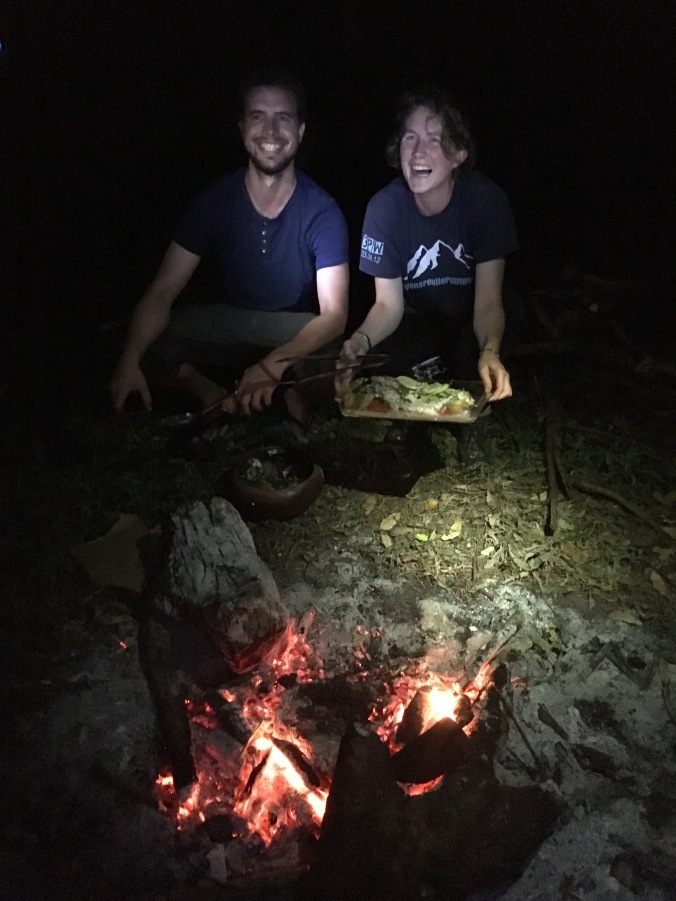

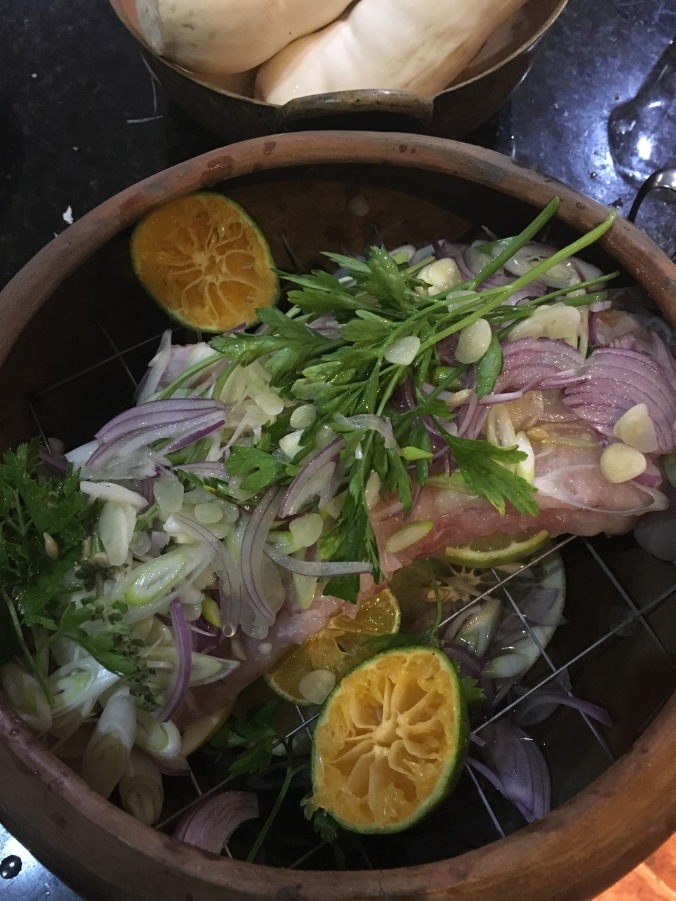
As much as I enjoyed the solo time and the low key existence when it was just me and Camila, when we were a bigger group, it was much more fun. Turns out I’m a community person.



